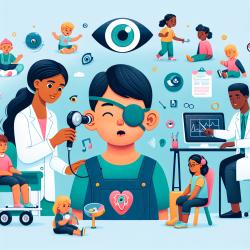Introduction
As professionals dedicated to enhancing the well-being of children, it is crucial to understand the multifaceted factors influencing adolescent health. The research article "Firearm Access and Adolescent Health: Safety in Numbers??" provides valuable insights into how personal and school-level firearm access impacts adolescent mental health. This blog aims to help practitioners improve their skills by implementing the outcomes of this research or encouraging further investigation.
Key Findings from the Research
The study analyzed data from the National Longitudinal Study of Adolescent to Adult Health to explore associations between firearm access and adolescent health outcomes, including depression, suicidal ideation, general health, and perceived school safety. The findings revealed:
- Personal firearm access is associated with increased odds of depression (OR 1.20), suicidal ideation (OR 1.73), and perceiving school as unsafe (OR 1.59).
- In schools with higher levels of firearm access, the negative association with perceived school safety was weaker (OR 0.83).
- The interaction between personal and school-level access showed that the association with suicidal ideation was weaker in schools where firearm access was more common.
Implications for Practitioners
These findings suggest that firearm access is a complex social phenomenon with varying impacts based on context. For practitioners, this highlights the importance of considering the broader social environment when addressing mental health issues related to firearm access. Here are some actionable steps:
- Contextual Assessment: Evaluate the community norms and levels of firearm access when assessing mental health risks in adolescents.
- Community Engagement: Work with local communities to understand their perceptions of firearm access and safety, and tailor interventions accordingly.
- Policy Advocacy: Advocate for policies that consider both individual and community-level firearm access to better address public health implications.
Encouraging Further Research
While this study provides significant insights, it also underscores the need for further research to explore the nuanced relationships between firearm access and adolescent health. Practitioners are encouraged to engage in or support research that investigates:
- The reasons behind firearm access (e.g., hunting, protection) and their specific health impacts.
- The role of social capital and community norms in moderating the effects of firearm access on mental health.
- Longitudinal studies to assess how changes in firearm access over time influence adolescent health outcomes.
Conclusion
The relationship between firearm access and adolescent health is complex and context-dependent. Practitioners must consider these dynamics to effectively support the mental health of adolescents. By integrating these insights into practice and advocating for informed policies, we can work towards creating safer and healthier environments for our youth.
To read the original research paper, please follow this link: Firearm access and adolescent health: Safety in numbers??










